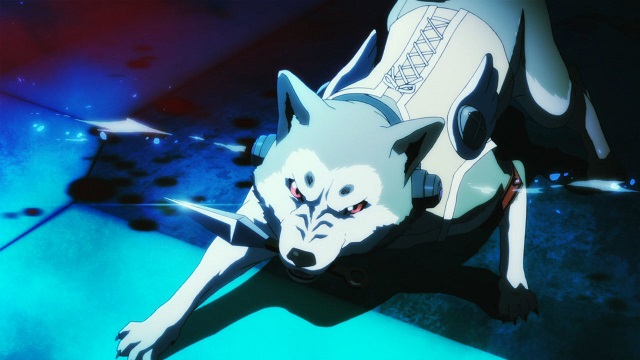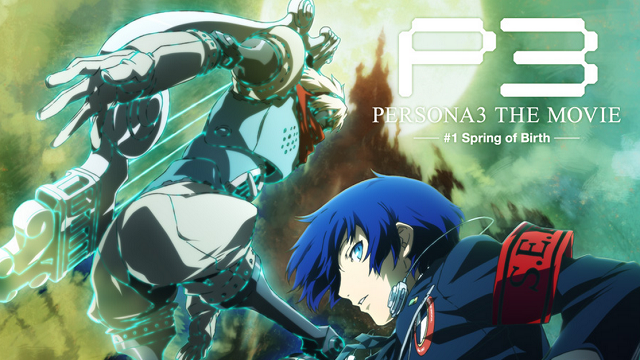Persona 3 is the third entry in a popular series developed by Atlus for the PlayStation console. The series, which was originally a spin off title from Shin Megami Tensei, found a cult following almost immediately. Releasing on July 13, 2006 in Japan, the third entry on the PlayStation 2 had solidified Persona as a staple in the RPG genre next to names like Final Fantasy, Dragon Quest, and even its predecessor, Megami Tensei. While the entire world anticipates the release of Persona 5, lets take a moment to reflect on an entry in the series which just released recently on Blu-Ray, Persona 3 the Movie #4: Winter of Rebirth.
Introduction
The Persona 3 the Movie series is a retelling of the events that occur in the game Persona 3. The story follows a Japanese teenager and his friends, including a robot and a dog, fighting to save the world in a mysterious 25th hour of the day known as the Dark Hour. Using the power to summon spiritual representations of themselves known as Persona, the group fights dark entities attempting to devour mankind — known as Shadows. If these terms sound familiar you might be familiar with Jungian psychology, on which the series is heavily influenced. Persona 3 has enjoyed several console releases each one adding or changing features in the game, these include: Persona 3 (PlayStation 2), Persona 3 FES (PlayStation 2), and Persona 3 Portable (PlayStation Portable). Persona 3 the Movie has also been released in multiple parts: Persona 3 the Movie #1: Spring of Birth, Persona 3 the Movie #2: Midsummer Knight’s Dream, Persona 3 the Movie #3: Falling Down, Persona 3 the Movie #4: Winter of Rebirth. Below we’ll take a look at what makes each movie different from the games. Fair warning, there will be unmarked spoilers ahead, continue at your own risk.
Persona 3 the Movie #1: Spring of Birth
“Time never waits. It delivers all equally to the same end.” The movie begins in the same manner the game does, setting an eerie tone with a few cryptic words scrawled across the screen. However it is not long before we are introduced to the primary protagonist, Makoto Yuki.
Makoto Yuki as he appears in Persona 3 the Movie
Makoto Yuki is a quiet, practically apathetic, young man who seems oblivious to the world around him. His character eventually matures and grows into a blooming personality that is more befitting of a hero, but in the games his personality is all implied through dialogue options that you select as a player. Speaking of selections, the most recently released version of Persona 3, Persona 3 Portable, allows the player to select their gender upon beginning the game. This drastically changes the events of the game, characters react differently to the female protagonist, you befriend different side characters, known as Social Links, in the game.
The female protagonist of Persona 3 Portable
This character simply does not exist in Persona 3 the Movie. She is never mentioned, nor is it ever implied that she has ever existed. This is because her role in Persona 3 Portable is completely identical to the male protagonist. She cannot exist in the story if he does without a serious restructuring of the story. This is quite unfortunate for fans of the game who did not play as the male protagonist, however, her influence is still visible within the movies. Social Links that are only available to the female protagonist appear as small cameos throughout the movies. This is small consolation for her absence but at least fans can enjoy seeing familiar faces from time to time represented in the beautifully animated films.
Social Links, a key part of the game which help you build up the power of your Personas, are also mysteriously absent. You are encouraged throughout the game to interact with the secondary cast members placed throughout the game world. These characters can become friends with you as you learn about their problems and hear their stories, you form relationships and even fall in love with them. These aspects of the game are also absent from the movie. However, it is understandable, the Persona 3 movie series was already forced to be cut into four parts, adding Social Links to the mix most certainly would have inflated this number even further and stressed the budget as well as the writers and animators.
With all these things that the movie cut, what did they keep? The movie follows the story closely, rarely cutting any details. Beginning from the moment our hero steps off his train and into the town of Iwatodai the movie faithfully recreates almost every scene of the game’s primary plot up to the days following the defeat of the game’s second major boss encounter, The Empress and The Emperor. Our heroes are tasked with defeating large named shadows themed after major arcana from the Rider-Waite tarot deck, which appear every month on the full moon. In the game this means you play through just under a year’s worth of time, deciding what actions you’ll do during the morning, afternoon and night. The movies glance over this, often skipping weeks at a time in order to progress the plot. There are also many added scenes to elaborate on characters motivations and interests, things that are hardly touched upon early in the game.
Persona 3 the Movie #2: Midsummer Knight’s Dream
The second movie begins roughly a month after the moment the previous movie ended, opening on a racy scene of female party member, Yukari Takeba, in the shower while our hero, Makoto, begins undressing sitting on a bed. While this event does occur in the game, it takes place after defeating the game’s third major boss, The Hierophant. When the player attempts to find the next boss, which is hidden somewhere in the same building, the characters are trapped in a hypnotic state and forced to contemplate their desires and actions. This is never fully explained in the movie, only briefly hinted at. Additionally, The Hierophant is defeated after the shower scene in the movie, in direct contradiction to the order of events of the game. This is an early warning sign of things to come in this movie.
Strega as they appear in Midsummer Knight’s Dream
Midsummer Knight’s Dream covers the plot of the game beginning with the defeat of the third major boss up to the death of a major character and defeat of the game’s seventh major boss, The Wheel of Fortune and The Strength. This includes the introduction of the game’s secondary antagonists, a group of Persona users called Strega, who directly oppose the desires of our heroes, known as the Specialized Extracurricular Execution Squad, or SEES. An important primary character who is featured heavily in this movie is Shinjiro Aragaki, a former member of SEES who left after an accident which resulted in the death of a young boys mother.
This is what the majority of the movie focuses on — Shiji’s interactions with the members of SEES, mostly his former teammate and friend Akihiko Sanada and the boy of the deceased woman, Ken Amada. SEES travels to Yakushima for summer vacation where they learn from a video recording of Yukari’s deceased father that defeating all the giant shadows will end the Dark Hour and save the world. Shortly after this revelation the group is introduced to Aegis, or Aigis as she is known in the English localizations of the game, a robotic humanoid girl designed to destroy Shadows. Shortly after returning to Iwatodai our heroes are introduced to two more characters who eventually join up with SEES, the aforementioned Ken Amada, and Koromaru, an albino shiba inu.

This is when the movie begins to stray from the plot of the game. Shinji’s story takes center stage, something that is only briefly glossed over in the games. We are treated to scenes of Shinji spending time with Koromaru, Ken Amada, and Akihiko Sanada quite frequently. We are also introduced to the concept that a Persona can go berserk and try to kill anything it wants, including its own master. This topic is only briefly discussed in the game, and is offered up as an explanation for why Shinjiro left SEES originally and why he takes dangerous drugs in an attempt to suppress his Persona. The movie runs wild with this idea, even going so far as to show us Shinjiro’s Persona attacking him and stomping its victims violently into pulp. It’s graphic and a far cry from what fans of the game would likely be expecting. This development is not unwelcome however, as it adds depth to an otherwise dull character. Fans of Persona 3 Portable will also enjoy this as many of the core concepts of Shinjiro’s character development were pulled from a Social Link in the female protagonist’s version of the game.
Shinjiro as he appears in Midsummer Knight’s Dream
The climax of this movie comes during a pivotal scene where Shinjiro confronts Ken about his mother’s death, revealing it was him that couldn’t stop his Persona during a violent rampage that led to Ken’s mother being killed. During the confrontation the leader of Strega, known as Takaya steps out of the shadows and guns down Shinjiro in cold blood. This scene is when the reality and gravity of the situation impresses itself on the players. This is more than just a story about heroes saving the world from demon like creatures. Persona 3 doesn’t pull punches, and the movie accurately portrays this in a very emotional finale. During the following scenes in which Akihiko mourns the loss of his friend Shinjiro, his Persona evolves into a more powerful form. This evolution, which is a representation of Akihiko’s growth as a character, never happens in the movie. Some fans may be left somewhat confused by its exclusion.
Join me next week for Persona 3 the Movie #3: Falling Down and the finale Persona 3 the Movie #4: Winter of Rebirth. Persona 3 the Movie #1: Spring of Birth and Persona 3 the Movie #2: Midsummer Knight’s Dream are both available now as imports with Japanese audio with English subtitles only on DVD and Blu-ray from Aniplex.







Published: Aug 13, 2016 04:09 pm